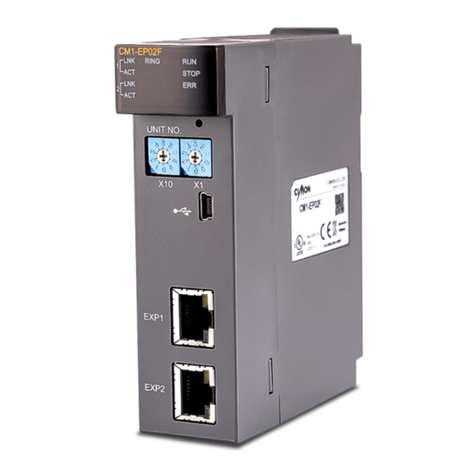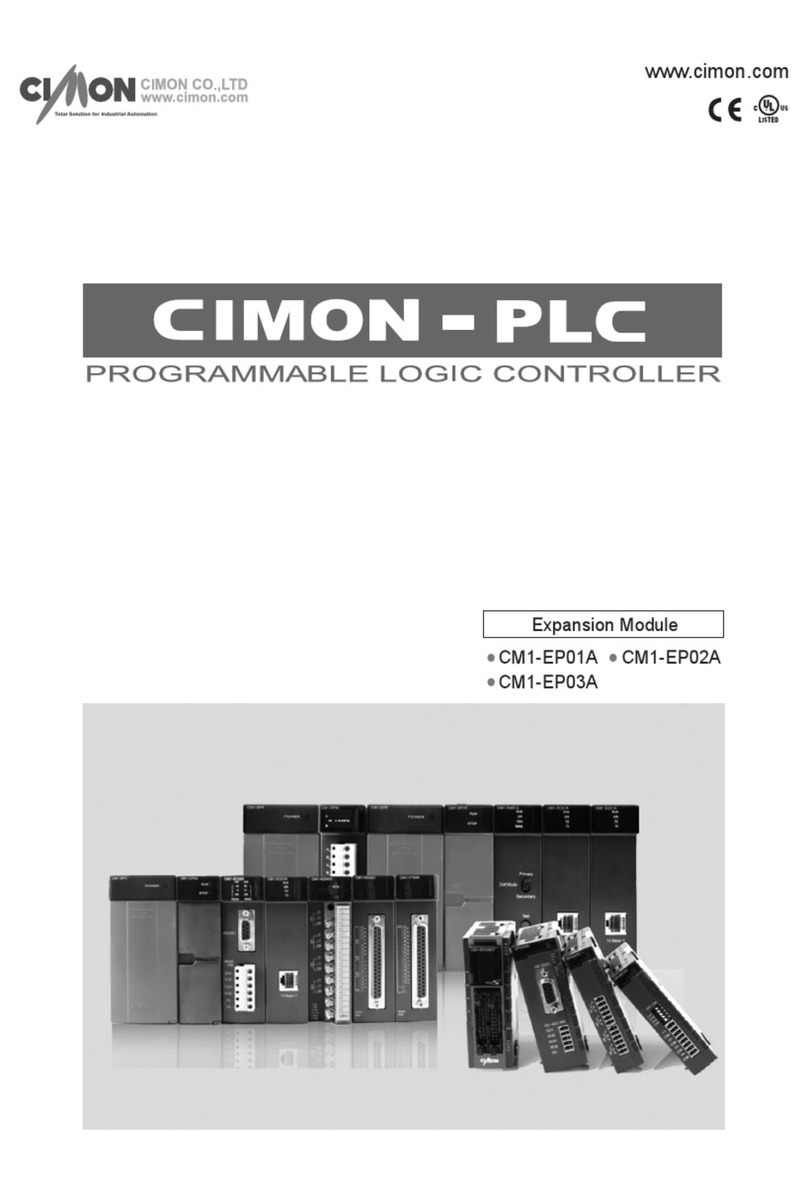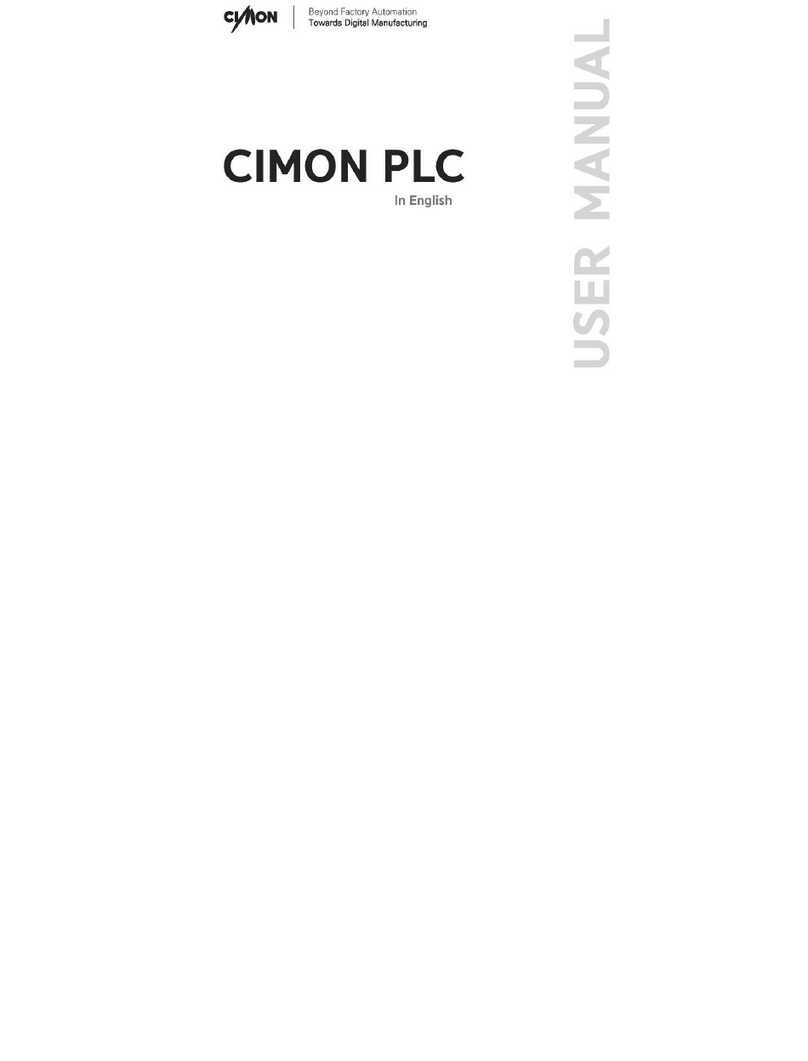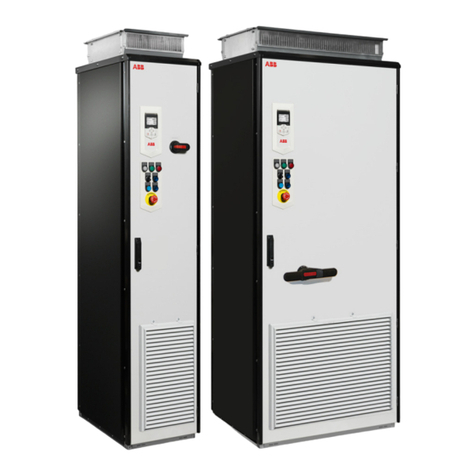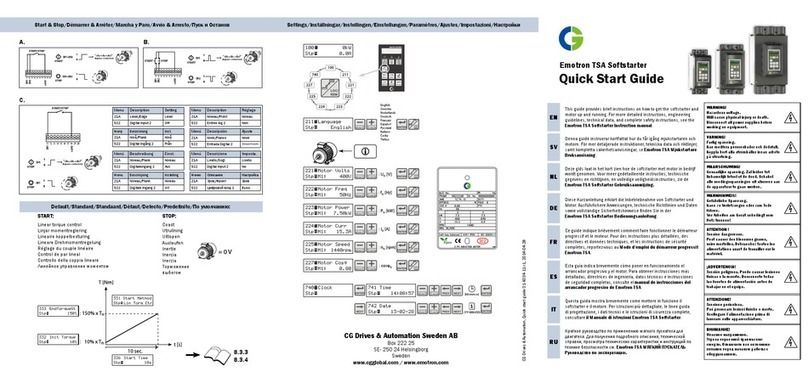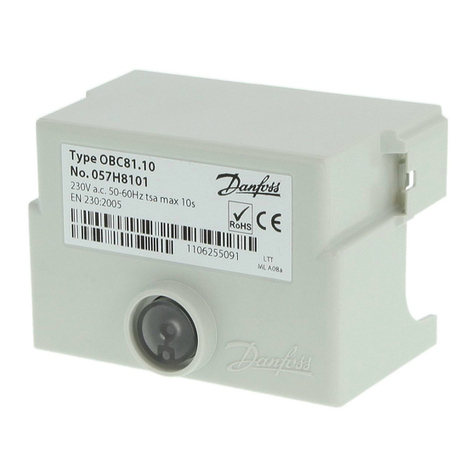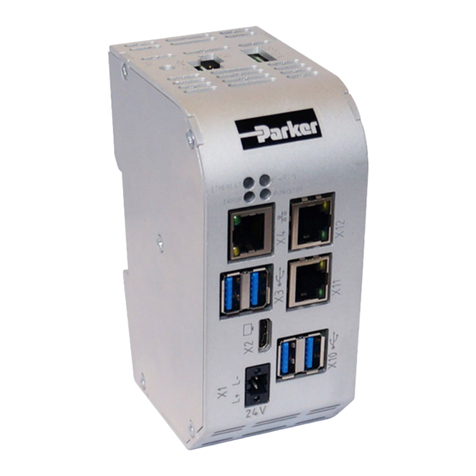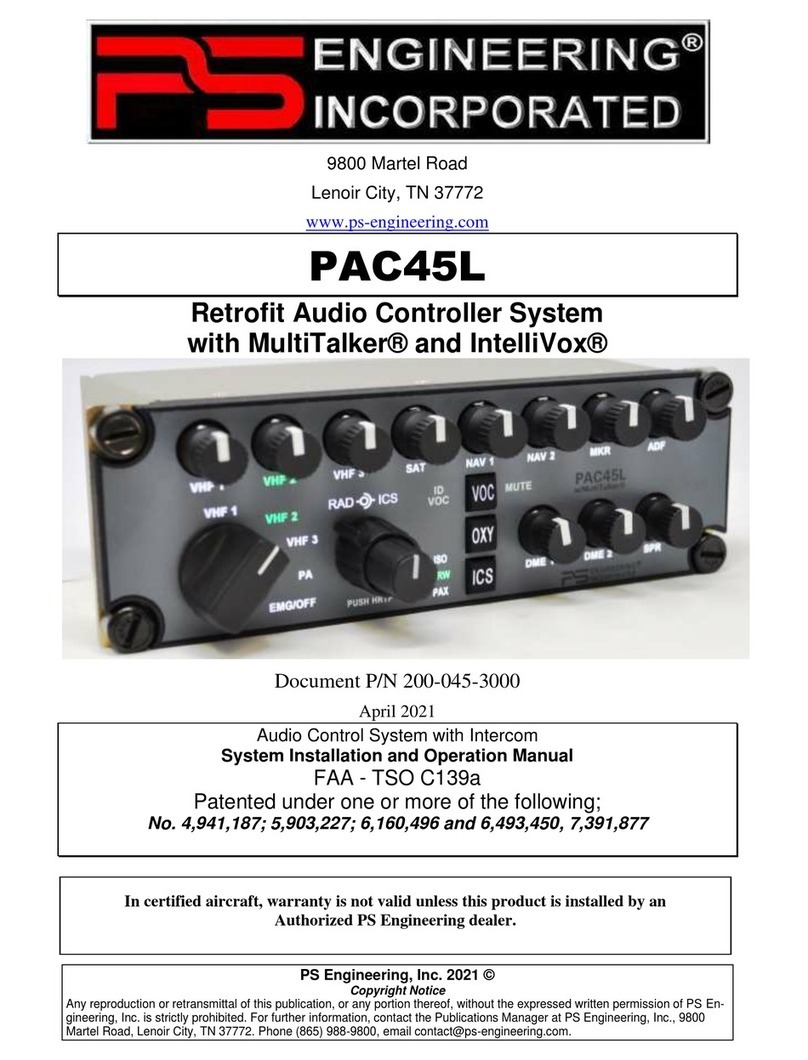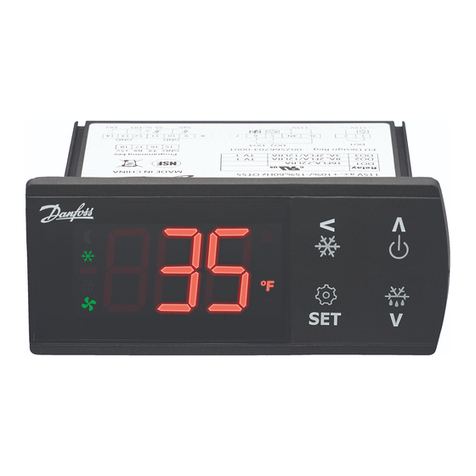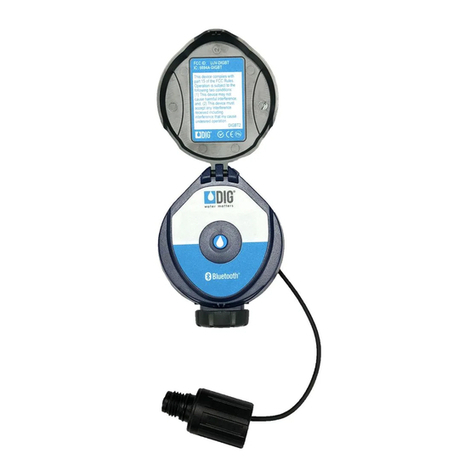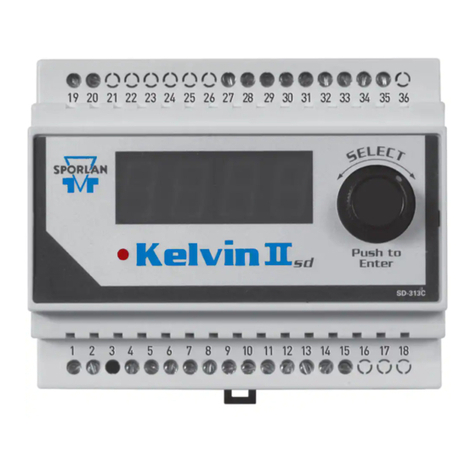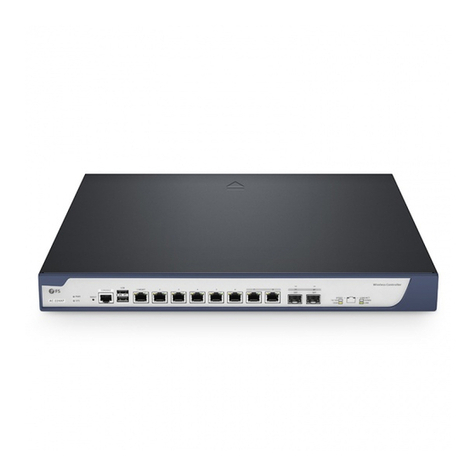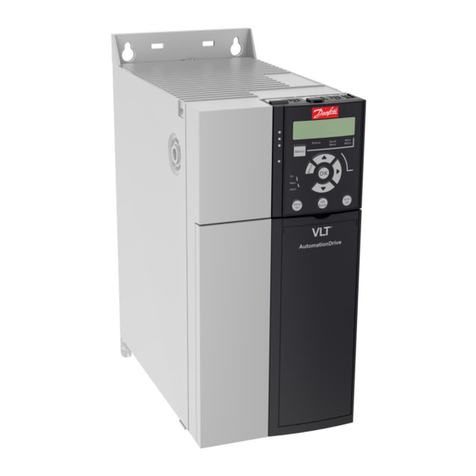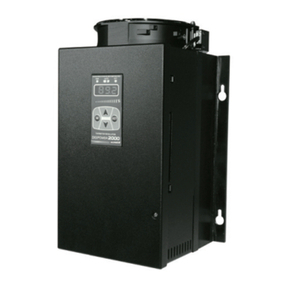Cimon CM1-XP1U User manual

- 1 -
CPU
•
CM1-XP1U/2U/3U
•
CM1-XP1F/2F/3F
•
CM1-XP1E/2E/3E
•
CM1-XP1A/2A/3A
•
CM1-CP3E
•
CM1-CP3A/B/P/U
•
CM1-CP4E/4F
•
CM1-CP4A/B/C/D/U
•
CM1-UP1F/2F/3F

- 2 -
Contents
General Specifications …………………………… 45
Performance Specifications ……………………… 46
CPU Comm. Port/Supported Protocol ………………… 58
Device & Address …………………………………………… 61
I/O points for Slot ………………………………………… 62
Features ………………………………………………… 63
Communication Interfaces ……………………………… 64
Appearance and Dimensions …………………………… 68
Install ation ………………… ………………………… 72
Product Warr anty…… …… …… …………………… 73

- 3 -
Before You Start
This manual contains important information on the use and operation of this device. Please
read all the information carefully for optimal performance and to prevent any damage or
misuse of the device.
To keep products safe, all activities including product installation, wiring operation, and
maintenance are required to be treated by trained personnel.
Reproduction of contents, in whole or part of this manual, without written permission from
CIMON Inc. is prohibited.
Safety symbols are classified into two categories: “WARNING” and “CAUTION”.
Warning: This symbol describes situations that could cause major or fatal injury to the
user.
Caution: This symbol describes situations that may cause minor injury or damage to the
device.
SAFETY SYMBOLS USED IN THIS PRODUCT MEAN:
This symbol warns the user of potential hazards.
This symbol warns the user of uninsulated voltage within the unit that can cause
dangerous electric shock.
Keep this manual nearby the user operating devices so it can be easily checked.

- 4 -
Design Precautions ( Warning)
Please install a safety circuit to protect the entire control system in case of an unexpected
power shut-down or PLC module malfunction. Such anomalies may severely compromise
the integrity of the overall system.
External to the PLC, please install circuits and switches to safeguard the system from
mechanical damages (ex. emergency stop, upper/lower limit switches, forward/reverse
direction interlocking circuits, etc)
When the PLC detects either of the following failure conditions, it may stop operation and
turn off all outputs.
- The overcurrent protection or overvoltage protection of the power supply module is
activated.
- The PLC CPU detected a failure, such as the watchdog timer error or module installation
failure, with its self-diagnostic function.
In addition, all outputs may be turned on when there is a failure that the PLC CPU cannot
detect, such as in the relay or TR terminal. Build an extra monitoring circuit that will monitor
any output signal that could cause serious accidents.
A greater than normal current passed through the PLC for an extended period of time, or a
short-circuited load flowing through the output module may cause a fire.
Build a circuit that turns on the external power supply after the PLC power supply is turned
on. If the external power supply is turned on first, it could result in output failure or
malfunction.
In order to ensure that the system operates safely, please configure an interlock circuit in the
scan program for the following situations.
- When exchanging data with a computer or other devices.
- When operated by a computer or other devices.
Not doing so could result in output failure or malfunction.
Precautions for design ( Caution)
Do not bundle the input/output signal or communication cables with the main circuit and
power cables. They should be installed at least more than 100 mm (3.94inches) apart. Not
doing so could result in output failure or malfunction.

- 5 -
Precautions for mounting ( Caution)
Use the PLC in an environment that meets the general specifications given in this manual.
Using this PLC in any environment outside the range of the general specifications could
result in electric shock, fire, malfunction, or damage to or deterioration of the product.
Please ensure that each module is installed correctly in its place. Loosely or incorrectly
installed pieces may result in malfunction, failure, or free-fall.
The PLC power supply should be turned off before mounting the module. Not doing so could
cause an electric shock or damage to the device.
Install I/O devices or extension connectors correctly. If they are installed incorrectly, it may
result in an input or output failure.
Do not convey direct vibration into the PLC. Doing so could cause electric shock, fire or
malfunctions.
After wiring work, please make sure to close the terminal cover before turning on the power
for the PLC system.
Precautions for wiring ( Warning)
Make sure to check the device’s rated voltage and circuit arrangement before wiring. Failure
to do so may cause electric shock or damage to the device.
Make sure to close the terminal cover before turning on the power of the PLC system after
wiring work. Failure to do so may cause electric shock.
Precautions for wiring ( Caution)
Make sure to check the device’s regular voltage and sequence of terminals. Failure to do so
may cause fire, electric shock, and malfunctions.
Make sure to tighten the screw with standard torque. Loose connections may cause a short
circuit, fire, or malfunctions.
When grounding the FG ground terminals, be sure to conduct the product with at least D
type (Class 3) grounding. Not doing so could result in electric shock or malfunctions.
When wiring, make sure that wiring debris does not enter the module. Failure to do so may
cause fire, equipment damage or malfunctions.
Precautions for wiring of CPU ( Caution)
Only a Class2 circuit can be used as the input power of the CPU module.
The CPU must not be removed from its safety enclosure during operation.

- 6 -
Precautions for test run and repair ( Warning)
Please do not touch the terminals when the power is on. Doing so could cause an electric
shock or malfunctions.
When cleaning or tightening the screws, turn off the power of the PLC and all other systems.
Failure to do so could cause an electric shock or malfunctions.
Do not charge, disassemble, heat up, short, or solder the battery. Doing so could cause the
battery to heat up, rupture or ignite thereby harming the user.
Precautions for test run and repair ( Caution)
Do not dissociate the PCB from the module’s casing or make any modifications to the
device. Doing so may cause fire, electric shock, or malfunction.
When mounting or separating the module, make sure to turn off power to the PLC and all
other devices. Failure to do so could cause an electric shock, or malfunctions.
Use radio, walkie-talkie, or cellphone devices at least 30 cm away from the PLC. Not doing
so could result in malfunction.
Precautions for disposal ( Caution)
When the product is disposed of, it should be done according to your country’s regulations
for similar types of industrial waste. Not doing so may cause an occurrence of toxic
substances or explosions.
Battery Information
1) CM1-CP4E/F, CM1-UPnF:
CR2032 (Hitachi Maxell), 3V, 10mA
2) Others: CR1/2AA (VARTA Microbattery), 3V, 4mA
3) If you change the battery, change the same kind of
batteries.

- 7 -
Items Specification Standards
Op. Temp
-10
℃
–
60
℃
-
St. Temp
-25
℃
–
80
℃
-
Op. Hum 5
–
95% RH, Not condensed
-
St. Hum 5
–
95% RH, Not condensed
-
Vibration
In case of Intermittent Vibration
IEC 61131-2
Frequency
Acceleration
Amplitude
Sweep
5 ≤ f < 9 Hz
-
3.5 mm
10 times
in X, Y, Z
9 ≤ f ≤ 150 Hz
9.8 m/s
2
(1G)
-
In case of Continuous Vibration
Frequency
Acceleration
Amplitude
Sweep
5 ≤ f < 9 Hz
-
1.75 mm
10 times
in X, Y, Z
9 ≤ f ≤ 150 Hz
4.9 m/s2 (0.5G)
-
Shock
Max. shock Acc.: 147 m/s2 (15G)
Time: 11 ms
Pulse wave: Half sine wave pulse (3 times in X, Y, Z)
IEC 61131-2
Noise
Square Wave
Impulse Noise
±2 kV CIMON
Standard
Electrostatic
Discharge
±4 kV (Contact), ±8 kV (Air)
IEC 61131-2
IEC 61000-4-2
Radiated
Electromagnetic
Field
80
–
1000 MHz,10 V/m
IEC 61131-2
IEC 61000-4-3
Fast Transient
Burst Noise
(Voltage)
CPU, Power 2kV
IEC 61131-2
IEC 61000-4-4
Digital/Analog I/O (AC)
Digital/Analog I/O (DC) 1kV
Communication
Ambient
Conditions
No corrosive gas and no dust
Altitude 2,000m or less
Pollution Pollution Degree 2 or less
Cooling
Natural Air Cooling
General Specifications

- 8 -
Item Specification
CM1-XP1F/U
CM1-XP2F/U
CM1-XP3F/U
Program Control Method Repetitive operation, Stored Program (ROM mode), Periodic operation
I/O Control Method Scan synchronous batch processing system (I/O refresh),
Indirect method, Direct method by instruction
Program Language
IL (Instruction List), LD (Ladder Diagram),
FBD (Function Block Diagram), FBD Extension,
SFC (Sequential Function Chart)
Number of Instructions Basic Instructions: 60, Application instructions: 480
Data
Processing
LD
0.028 µs/step
Floating-point
Arithmetic
+, -, x, / : 0.4 µs/Instruction
Program Memory 7M Byte (Upload, Parameter, System)
Number of
Program Block
s
Max 128, up to 65,530 steps per block (PID)
Number of I/O
8,192 4,092 2,048
Number of I/O Device
s
Input: 131,072 points, Output: 131,072 points
Supporting
Program
LD
Scan, Subroutine, Initialize (COLD), Initialize (HOT), Periodic interrupt
Special
Configuration
Initializing special card, PID control, Thermistor setting, Loadcell setting,
I/O Input module filter setting
Communication
User protocol (Serial), User protocol (Ethernet), MODBUS TCP/RTU M
aster/Slave, Ethernet High-speed link, CIMON-NET Master/Slave, DNP
3, Public network IP setting, Fieldbus, OPC UA Server
SFC
SFC Program
Periodic Interruption
Maximum 15, cycle setting (10–60,000 ms, Unit :10 ms),
priority setting (0–14)
Base Expansion
Maximum 16, Ring topology
Max. Distance
Electricity (100 m)
Redundancy
-
Operation modes
LOCAL/Remote (RUN, STOP, PAUSE)
Restarting
Cold, Hot Restart
Self-Diagnosis
Monitoring delay of processing, problems of memory,
I/O, battery, power error
Data Preservation
Against Power Failure
K device and conservation (Latch) in M, L, T, C, S, D device
Watch Dog Timer (
WDT
)
Maximum 5000 ms (Unit: 10 ms)
Timer
On Delay, Off Delay, Addition, Monostable, Retriggerable
Cycle: Either 10 or 100 ms
TC (Current value)/TS (Setting value)
Counter
UP, DOWN, UP/DOWN, RING COUNTER, CC (Current value)/CS
(Setting value)
No limitation on number of points
Count range: -32,768–32,767
PID
32 Channels, Auto-Tuning
Performance Specification (XP Series)

- 9 -
Communication
Channels
USB
USB 2.0 Mini-B: For Loader Protocol
Serial
RS-232C (Maximum 115,200 bps):
CICON Loader, CIMON-HMI, MODBUS RTU Slave
Ethernet
Expanded/Built-in Ethernet :10/100Base-T/TX, -FX
Built-in Ethernet: CICON Loader, CIMON-HMI, Modbus TCP
Slave
*Available to use Built-in Ethernet when nonuse of expansion.
Event log
Maximum 100 (Power, Mode, Error)
Firmware Upgrade
Available
Power
5 Vdc, 220 mA
Weight (g)
138 g
Floating-point
A
rithmetic
Supporting instructions for floating-point arithmetic
Capacity
of
Scan
P
rogram
128k steps
Device
Memory
X
8,192 4,096 2,048
Y
8,192 4,096 2,048
M
16,000
K
16,000
L
16,000
F
2,048
T
4,096 (select between 10 ms and 100 ms)
C
4,096
S
100Card*100Step
D
32,000 Word
Z
2,048 Word
Q
512 Word
R
16 Word
Performance Specification (XP Series)

- 10 -
Item
Specification
CM1-XP1E
CM1-XP2E
CM1-XP3E
Program Control Method Repetitive operation, Stored Program (ROM mode), Periodic operation
I/O Control Method Scan synchronous batch processing system (I/O refresh),
Indirect method, Direct method by instruction
Program Language
IL (Instruction List), LD (Ladder Diagram),
FBD (Function Block Diagram), FBD Extension,
SFC (Sequential Function Chart)
Number of Instructions Basic Instructions: 60, Application Instructions: 480
Data
Processing
LD
0.028 μs/step
Floating-point
Arithmetic
+, -, x, / : 0.4 μs/instruction
Program Memory 7 MByte (Upload, Parameter, System)
Number of
Program Block
s
Max 128, up to 65,530 steps per block (PID)
Number of I/O
8,192 4,092 2,048
Number of I/O Device
s
Input: 131,072 points, Output: 131,072 points
Supporting
Program
LD
Scan, Subroutine, Initialize (COLD), Initialize (HOT), Periodic interrupt
Special
Configuration
Initializing special card, PID control, Thermistor setting,
Loadcell setting, I/O Input module filter setting
Communication
User protocol (Serial), User protocol (Ethernet), MODBUS TCP/RTU M
aster/Slave, Ethernet High-speed link, CIMON-NET Master / Slave, DN
P3, Public network IP setting, Fieldbus, OPC UA Server
SFC
SFC Program
Periodic Interruption
Maximum 15, cycle setting (10–60,000 ms, Unit :10 ms),
priority setting (0–14)
Base Expansion
Maximum 16 (10/100Base-T/TX)
Max. Distance
Electricity (100 m)
Redundancy
-
Operation
M
odes
LOCAL/Remote (RUN, STOP, PAUSE)
Restarting
Cold, Hot Restart
Self-Diagnosis
Monitoring delay of processing, problems of memory,
I/O, battery, power error
Data Preservation
Against Power Failure
K device and conservation (Latch) in M, L, T, C, S, D device
Watch Dog Timer (
WDT
)
Maximum 5000 ms (Unit: 10 ms)
Timer
On Delay, Off Delay, Addition, Monostable, Retriggerable
Cycle: Either 10 or 100 ms
TC (Current value)/TS (Setting value)
Counter
UP, DOWN, UP/DOWN, RING COUNTER, CC (Current value)/CS
(Setting value)
No limitation on number of points
Count range: -32,768–32,767
PID
32 Channels, Auto-Tuning
Performance Specification (XP Series)

- 11 -
Communication
Channels
USB
USB 2.0 Mini-B: For Loader Protocol
Serial
RS-232C (Maximum 115,200 bps):
CICON Loader, CIMON-HMI, MODBUS RTU Slave
Event log
Power, Mode, Error
Firmware Upgrade
Available
Power
5 Vdc, 220 mA
Weight (g)
138 g
Floating-point
A
rithmetic
Supporting instructions for floating-point arithmetic
Capacity
of
Scan
P
rogram
128k steps
Device
Memory
X
8,192 4,096 2,048
Y
8,192 4,096 2,048
M
16,000
K
16,000
L
16,000
F
2,048
T
4,096 (select between 10 ms and 100 ms)
C
4,096
S
100 Card*100 Step
D
32,000 Word
Z
2,048 Word
Q
512 Word
R
16 Word
Performance Specification (XP Series)

- 12 -
Item Specification
CM1-XP1A CM1-XP2A CM1-XP3A
Program Control Method Repetitive operation, Stored Program (ROM mode), Periodic operation
I/O Control Method Scan synchronous batch processing system (I/O refresh), Indirect meth
od, Direct method by instruction
Program Language
IL (Instruction List), LD (Ladder Diagram),
FBD (Function Block Diagram), FBD Extension,
SFC (Sequential Function Chart)
Number of Instructions Basic Instructions: 60, Application Instructions: 480
Data
Processing
LD 0.075 μs/step
Floating
-
point
Arithmetic
+, -, x, / : 0.4 μs/instruction
Program Memory 7 MByte (Upload, Parameter, System)
Number of
Program Block
s
Max 128, up to 65,530 steps per block (PID)
Number of I/O 8,192 4,092 2,048
Number of I/O Devices
Input: 131,072 points, Output: 131,072 points
Supporting
Program
LD
Scan, Subroutine, Initialize (COLD), Initialize (HOT), Periodic interrupt
Special
Configuration
Initializing special card, PID control, Thermistor setting, Loadcell setting,
I/O Input module filter setting
Communication
User protocol (Serial), User protocol (Ethernet), MODBUS TCP/RTU Ma
ster, Ethernet High-speed link, CIMON-NET Master/Slave, DNP3, Publi
c network IP setting, Fieldbus
Periodic Interruption
Maximum 15, cycle setting (10
–
60,000
ms, Unit :10
ms), priority
setting
(0
–
14)
Base Expansion
Maximum 16 (10Base-T)
Max. Distance
Electricity (100 m)
Redundancy
-
Operation Modes
LOCAL/Remote (RUN, STOP, PAUSE)
Restarting
Cold, Hot Restart
Self-Diagnosis
Monitoring delay of processing, problems of memory,
I/O, battery, power error
Data Preservation
Against Power Failure
K device and conservation (Latch) in M, L, T, C, S, D device
Watch Dog Timer (WDT)
Maximum 5000 ms (Unit: 10 ms)
Timer
On Delay, Off Delay, Addition, Monostable, Retriggerable
Cycle: Either 10 or 100 ms
TC (Current value)/TS (Setting value)
Counter
UP, DOWN, UP/DOWN, RING COUNTER, CC (Current value)/CS
(Setting value)
No limitation on number of points
Count range: -32,768–32,767
PID
32 Channels, Auto-Tuning
Performance Specification (XP Series)

- 13 -
Communication
Channels
USB
USB 2.0 B Type: For Loader Protocol
Serial
RS-232C (Maximum 38,400 bps):
CICON Loader / Type: RJ11
Event log
Power, Mode, Error
Firmware Upgrade
-
Power
5 Vdc, 220 mA
Weight (g)
157 g
Floating-point
A
rithmetic
Supporting instructions for floating-point arithmetic
Capacity
of
Scan
P
rogram
128k steps 64k steps 64k steps
Device
Memory
X
8,192 4,096 2,048
Y
8,192 4,096 2,048
M
16,000
K
16,000
L
16,000
F
2,048
T
4,096 (select between 10 ms and 100 ms)
C
4,096
S
100 Card*100 Step
D
32,000 Word
Z
2,048 Word
R
16 Word
Performance Specification (XP Series)

- 14 -
Item Specification
CM1-CP3E CM1-CP4E CM1-CP4F
Program Control Method Repetitive operation, Stored Program (ROM mode), Periodic operation
I/O Control Method Scan synchronous batch processing system (I/O refresh), Indirect meth
od, Direct method by instruction
Program Language
IL (Instruction List), LD (Ladder Diagram),
FBD (Function Block Diagram), FBD Extension,
SFC (Sequential Function Chart)
Number of Instructions Basic Instruction: 60, Application instruction: 480
Data
Processing
LD 0.084 μs/step 0.2 μs/step
Program Memory 512 Kbyte 256 Kbyte
Number of
Program Block
s
Max 128, up to 65,530 steps per block (PID)
Number of I/O 1,536 384
Number of I/O Devices
32,768 8,192
Supporting
Program
LD
Scan, Subroutine, Initialize (COLD), Initialize (HOT), Periodic interrupt
Special
Configuration
Initializing special card, PID control, Thermistor setting, Loadcell setting,
I/O Input module filter setting
Communication
User protocol (Serial), User protocol (Ethernet), MODBUS TCP/RTU Ma
ster, Ethernet High-speed link, CIMON-NET Master / Slave, DNP3, Publ
ic network IP setting, Fieldbus, OPC UA Server
SFC SFC Program
Periodic Interruption
Maximum 15, cycle setting (10
–
60,000
ms, Unit :10
ms),
priority setting (0
–
14)
Base Expansion
Maximum 16 (10Base-T)
-
Max. Distance
Electricity (100 m) -
Redundancy
-
Operation Modes
LOCAL/Remote (RUN, STOP, PAUSE)
Restarting
Cold, Hot Restart
Self-Diagnosis
Monitoring delay of processing, problems of memory,
I/O, battery, power error
Data Preservation
Against Power Failure
K device and conservation (Latch) in M, L, T, C, S, D device
Watch Dog Timer (WDT)
Maximum 5000 ms (Unit: 10 ms)
Timer
On Delay, Off Delay, Addition, Monostable, Retriggerable
Cycle: Either 10 or 100 ms
TC (Current value)/TS (Setting value)
Counter
UP, DOWN, UP/DOWN, RING COUNTER,
CC (Current value)/CS (Setting value)
No limitation on number of points
Count range: -32,768–32,767
PID
32 Channels, Auto-Tuning
Performance Specification (CP Series)

- 15 -
Communication
Channels
USB
USB 2.0 B Mini-B: For Loader Protocol
Serial
RS-232C (Maximum 38,400 bps):
CICON Loader, CIMON-HMI,
MODBUS RTU Slave / Type: Terminal Block
RS-485 (Maximum
115,200 bps):
CICON Loader, CIMON
-HMI, MODBUS RTU Sl
ave / Type: RJ45
Ethernet
Expanded: 10Base-T
-
Event log
Power, Mode, Error
Firmware Upgrade
Available
Power
5 Vdc, 195 mA 5 Vdc, 70 mA 5 Vdc, 100 mA
Weight (g)
140 g 127 g 137 g
Floating-point Arithmetic
-
Capacity of
Scan
P
rogram
64k steps 16k steps
Device
Memory
X
1,536 384
Y
1,536 384
M
8,192
K
2,048
L
2,048
F
2,048
T
1,024 (select between 10 ms and 100 ms)
C
1,024
S
100 Card*100 Step
D
10,000 Word 5,000 Word
Z
1,024 Word
Q
512 Word
R
16 Word
Performance Specification (CP Series)

- 16 -
Item Specification
CM1-CP3A CM1-CP3B CM1-CP3U CM1-CP3P
Program Control Method Repetitive operation, Stored Program (ROM mode),
Periodic operation
I/O Control Method Scan synchronous batch processing system (I/O refresh),
Indirect method, Direct method by instruction
Program Language IL (Instruction List), LD (Ladder Diagram),
FBD (Function Block Diagram), FBD Extension
Number of Instructions Basic Instructions: 60, Application Instructions: 480
Data
Processing
LD 0.2 μs / Step
Program Memory 512 Kbyte
Number of
Program Block
s
Max 128, up to 65,530 steps per block (PID)
Number of I/O 1,024
Number of I/O Devices
Input: 32,768 points, Output: 32,768 points
Supporting
Program
LD
Scan, Subroutine, Initialize (COLD), Initialize (HOT),
Periodic interrupt
Special
Configuration
Initializing special card, PID control, Thermistor setting, Loadcell setting
, I/O Input module filter setting
Communication
User protocol (Serial), User protocol (Ethernet), MODBUS TCP/RTU M
aster, Ethernet High-speed link, CIMON-NET Master/Slave, DNP3, Pub
lic network IP setting, Fieldbus
Periodic Interruption
Maximum 15, cycle setting (10–60,000 ms, Unit :10 ms),
priority setting (0–14)
Base Expansion
Maximum 16 (10Base-T)
Max. Distance
Electricity (100 m)
Redundancy
-
Operation Modes
LOCAL/Remote (RUN, STOP, PAUSE)
Restarting
Cold, Hot Restart
Self-Diagnosis
Monitoring delay of processing, problems of memory,
I/O, battery, power error
Data Preservation
Against Power Failure
K device and conservation (Latch) in M, L, T, C, S, D device
Watch Dog Timer (WDT)
Maximum 5000 ms (Unit: 10 ms)
Timer
On Delay, Off Delay, Addition, Monostable, Retriggerable
Cycle: Either 10 or 100 ms
TC (Current value)/TS (Setting value)
Counter
UP, DOWN, UP/DOWN, RING COUNTER, CC (Current value)/CS
(Setting value)
No limitation on number of points
Count range: -32,768–32,767
PID
32 Channels, Auto-Tuning
Performance Specification (CP Series)

- 17 -
Communication
Channels
USB
USB 2.0 B
Type: For
Loader Protocol
Serial
RS-232C (Maximum 38,400 bps): CICON Loader
/ Type: RJ11
Ethernet Expanded: 10Base-T
Event log
Power, Mode, Error
Firmware Upgrade
-
Power
5 Vdc, 240 mA
Weight (g)
135 g 135 g 153 g 139 g
Floating-point Arithmetic
-
Capacity of
Scan
P
rogram
32k steps
Device
Memory
X
1,024
Y
1,024
M
8,192
K
2,048
L
2,048
F
2,048
T
1,024 (select between 10 ms and 100 ms)
C
1,024
S
100 Card*100 Step
D
10,000 Word
Z
1,024 Word
R
16 Word
Performance Specification (CP Series)

- 18 -
Items Performance Specification
CM1-UP1F
CM1-UP2F
CM1-UP3F
Program Control Method
Repetitive Operation, Periodic Operation, Stored Program
I/O Control Method
Scan synchronous batch processing system (I/O Refresh),
Direct method by instruction
Program Language
LD (Ladder Diagram), IL (Instruction List),
FBD (Function Block Diagram), FBD Extension, SFC (Sequential Fu
nction Chart), ST (Structured Text)
No. of Instructions Basic Instructions: approx. 60
Application Instructions: approx. 480
Data
Processing
LD 0.075 μs/step
MOV 0.049 μs/step
Floating-point
A
rithmetic
+, -, x, / : 0.050 μs/Instruction
Program Memory 7 MByte (Upload, Parameter, System)
No. of Program Blocks
Scan, Special, Comm., SFC Program: Max. 128 blocks. Max 65,530
steps per block (PID)
ST Program: Max. 128 blocks
No. of I/O
16,384 points 8,192 points 4,096 points
Max. No. of valid I/O
16,384 points 8,192 points 4,096 points
Supported
Programs
LD
Scan, Subroutine, Initialize (COLD/HOT), Periodic Interrupt
Special Config.
Initializing Special Card, PID Control, Thermistor Setting, Loadcell
Setting, I/O Input Module Filter Setting
Communication
User Protocol (Serial/Ethernet), MODBUS TCP/RTU Master,
Ethernet High-speed Link, CIMON-NET Master/Slave, DNP3,
Public
Network IP Setting, Fieldbus, OPC UA Server
SFC
SFC Program
ST
ST Program (ST-only local variables/global variables)
Periodic Interruption
Max. 15, cycle setting (1–60,000 ms, unit: 1 ms), Priority (0–14)
Base Expansion
Local Base + Max. 31 Expansions (Line-Expansion)
Max. Distance
Electricity (100 m)
Redundancy
-
Operation Modes
LOCAL/Remote (RUN, STOP, PAUSE),
Switch (RUN, STOP, Pause/RM)
Restarting
Cold, Hot Restart
Self-Diagnosis
Monitoring Process Delay, Memory Errors, I/O Errors,
Power Errors,
Battery Errors
Data Preservation Against
Power Failure
K Device and Conservation area (Latch) in M, L, T, C, S, D Device
Watch Dog Timer (WDT)
10–5000 ms (Unit: 10 ms)
Performance Specification (UP Series)

- 19 -
Timer
Cycle: 0.01 second–6553.5 seconds (10 or 100 ms)
On Delay, Off Delay, Integration, Monostable, Retriggerable
Counter
Counter Range: -32,768–32,767
UP, DOWN, UP/DOWN, RING COUNTER
PID
32 Channels, Auto-Tuning
Communication
Channels
USB
Serial: Loader Protocol only
Serial
RS-232C (Max. 115,200 bps)
Supported Protocols: CICON Loader, CIMON-HMI, MODBUS RTU
Slave
Ethernet
(2 Ports)
Speed: 10/100/1000 Mbps
Expansion or Ethernet Comm. (Port A: Ethernet Comm., Port B:
Expansion)
Supported Comm. (Ethernet): CICON Loader, CIMON-HMI,
MODBUS TCP Slave
Event Log
Max. 100 event logs (Power, Mode, Error)
Firmware Upgrade
Supported
Power
5 Vdc, less than 250 mA
Weight (g)
130 g (±5 g)
Floating-point Arithmetic
Supports floating-point arithmetic instructions
Additional Features
I/O Reservation, PLC-LINK, RTC, Online Edit,
Program download via SD Card, Whole system backup/recovery,
Device backup/recovery, System log backup
Scan Program Capacity
256k steps 128k steps 64k steps
Device Memory
X
16,384 Points 8,192 Points 4,096 Points
Y
16,384 Points 8,192 Points 4,096 Points
M
65,536 Points
K
65,536 Points
L
65,536 Points
F
4,096 Points
T
4,096 (select between 10 ms, 100 ms)
C
4,096
S
100 Cards * 100 Steps
D
32,767 Words
Z
1,024 Words
Q
8,192 Points
R
16 Words
Performance Specification (UP Series)

- 20 -
Interface RS-232
(Loader only)
USB
(Loader only)
RS-232 RS-232 RS-422/485
Ethernet
(Expansion)
Connector
RJ11
B or mini-B
Terminal
Block
RJ45
RJ45
Location Front Front Front Bottom Bottom
CP3
A/B/P Yes No No No No
Yes
U Yes Yes(B) No No No
E No Yes(mini-B)
Yes
(Loader, HMI,
Modbus/RTU)
No No
CP4
A/B Yes No No No No
No
C Yes No No Yes
(Loader, HMI)
No
D Yes No No No Yes
(Loader, HMI)
U Yes Yes(B) No No
E No Yes(mini-B) Yes
(Loader, HMI,
Modbus/RTU)
No
No
F No Yes(mini-B)
Yes
(Loader, HMI,
Modbus/RTU)
▶ Same features in XPnA, CP3U, CP4U
▶ Same features in CP3A/B/P, CP4A/B/C/D
CPU Comm. Port / Supported Protocol (CP Series)
This manual suits for next models
26
Table of contents
Other Cimon Controllers manuals
Popular Controllers manuals by other brands

YOKOGAWA
YOKOGAWA FA-M3 Vitesse Maintenance Guide

GameSir
GameSir X2 user manual

Leroy-Somer
Leroy-Somer Digistart D3-1 0023-B Series user guide
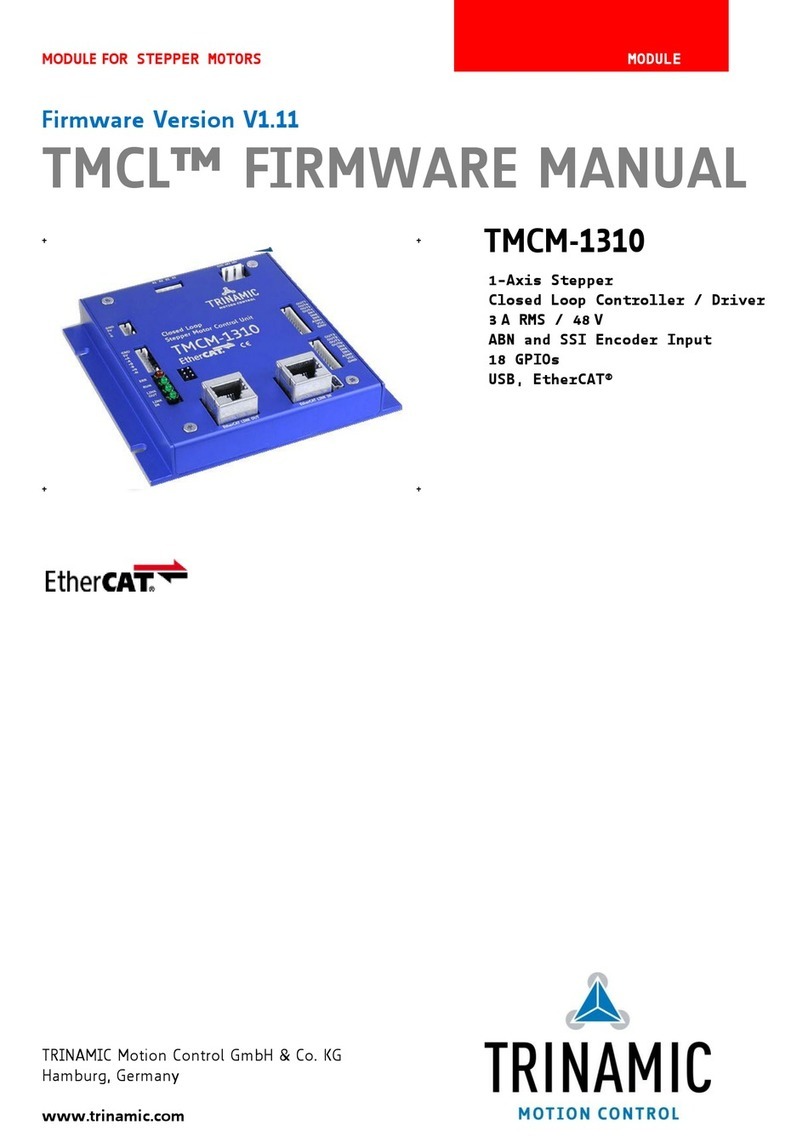
EtherCAT
EtherCAT TMCM-1310 Firmware manual
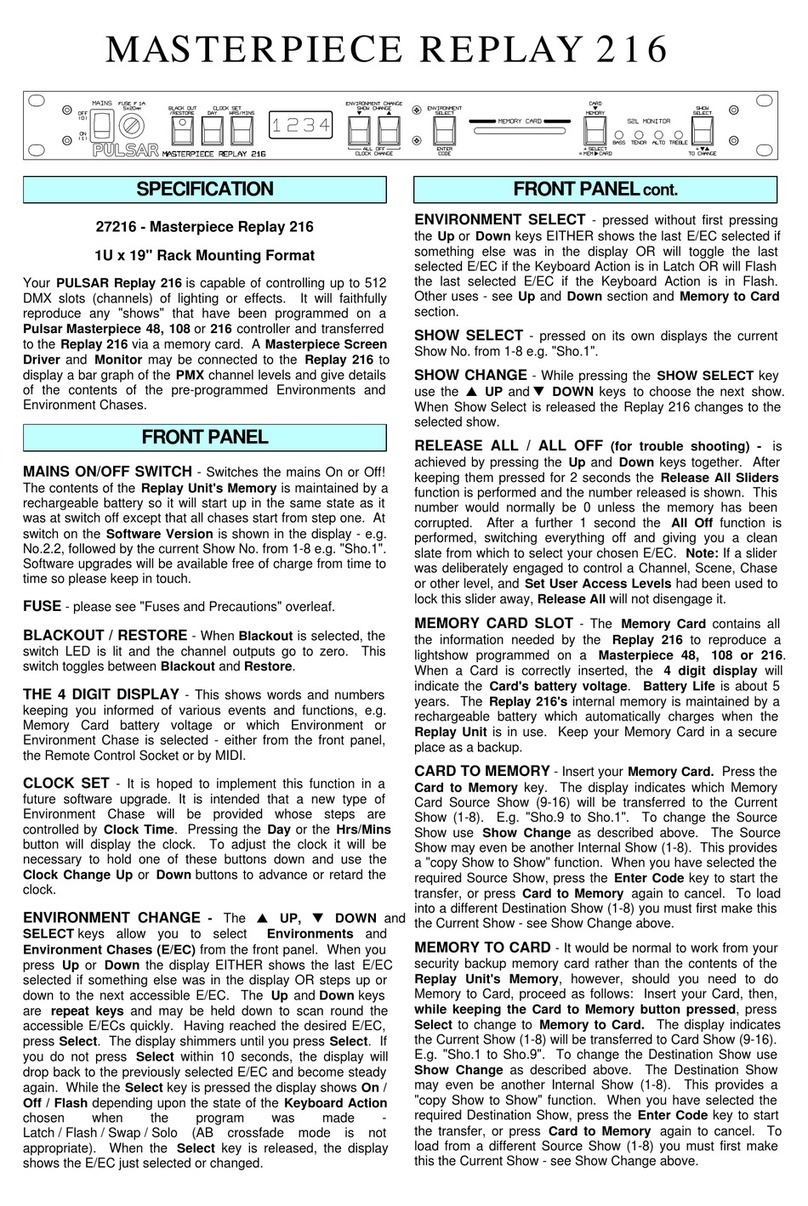
Pulsar
Pulsar Masterpiece Replay 216 user manual
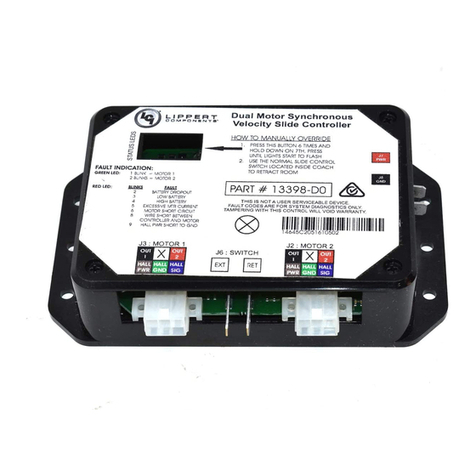
Lippert Components
Lippert Components 13398-C1 Operation and service manual
